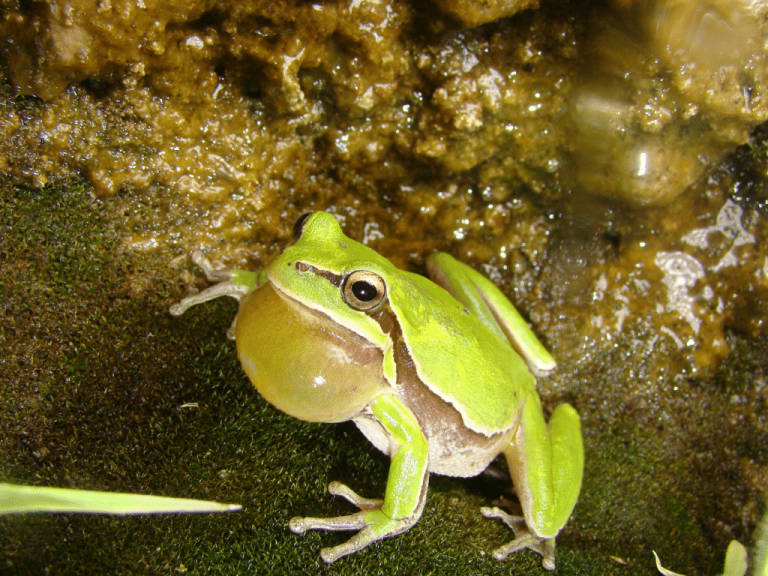When you see a frog, just pay attention to observe, and you will notice its chin constantly moving up and down, as if it’s very excited or still catching its breath after running a long distance. What’s going on?
To explain this phenomenon, we need to carefully observe how frogs breathe. We know that although a frog’s mouth is very wide, hence the nickname “big-mouthed frog,” it rarely opens its mouth except for eating. Its nostrils are located between its eyes and mouth. When it breathes, it works like a bellows. First, it tightly closes its mouth, lowers its throat, opens its nostrils, and inhales air from the outside into its mouth, filling it with air. Then it closes its nostrils, trapping the air inside. At this point, its throat rises, making the mouth cavity narrow and filled with air. Then, like a bellows, it pushes the air into its lungs. When it exhales, it relies on the elasticity of its lungs and the contraction of its abdominal muscles to compress the air out of its lungs. This constant movement of the frog’s throat causes its chin to move up and down.
Although frogs, like humans, use their lungs for breathing, their lungs are not well-developed. They have fewer alveoli, a smaller surface area, and a limited gas exchange capacity. Therefore, the oxygen absorbed by their lungs alone cannot meet their metabolic needs. Hence, their skin, which is exposed throughout their bodies, secretes mucus to keep it moist, facilitating gas exchange to supplement the inadequate lung respiration. Frogs prefer to inhabit watery environments, pondsides, and moist grasslands primarily to keep their skin moist, which is closely related to their skin’s respiratory function.

